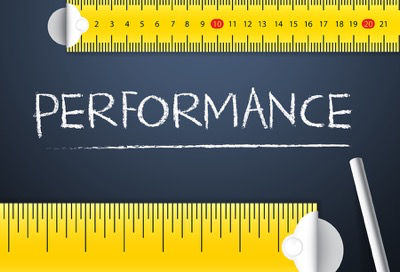Have you ever noticed an actor in a movie use a sleek electric toothbrush in a shape and color you like? You’re considering buying one, but you’re unsure about the brand or model. And when you try to type “silver electric toothbrush” into Google, it doesn’t display the right one.
Or maybe you’re working on a DIY project and holding a tool you can’t name. How do you describe it?Sometimes, keywords aren’t very helpful, which is why visual search has become transformative.
Research on Gen Z and millennial consumers has revealed that 62% want visual search features when shopping online. People are craving image-first ways to explore, and as such, digital marketers need to meet them there.
With image SEO as one of the next big frontiers in search optimization, what should your next move be?
 What Is Visual Search?
What Is Visual Search?
A visual search utilizes pictures instead of words to find what users are looking for online. Here is how users typically do it:
- Step 1: Take or Upload an Image. It could be a photo of a celebrity, a screenshot of a dish, or an image of a particular product.
- Step 2: Submit To a Search Engine. Give AI visual search tools time to analyze your picture.
- Step 3: Review the Matches. The search engine delivers visually similar or contextually related results, possibly with more information like prices, stores, or recipes.
Key Technologies Behind Visual Search
When you upload a photo, advanced artificial intelligence (AI) systems take over. These systems analyze the image pixel by pixel, breaking everything down into patterns. AI studies the colors, textures, shapes, and edges, then compares those details against enormous databases of images. This process, powered by deep learning, means the AI gets smarter every time it processes new data.
Visual search engines also rely on computer vision techniques. Through machine learning and neural networks, they recognize features and compare them at lightning speed.
There are two primary methods: content-based image retrieval (CBIR) and metadata-based search. The system either converts the visual features of a picture into numerical values or focuses on alt text, filenames, and descriptions.
Ultimately, visual search combines raw visual analysis and contextual clues. Together, these aspects make it possible to recognize a pair of running shoes, a handbag, or even a mysterious object without requiring the right keywords.
 Optimizing Your Content for Visual Search
Optimizing Your Content for Visual Search
Like traditional SEO, visual search optimization is about making sure your content is discoverable. It improves search visibility and boosts accessibility, user experience, and conversions. Here are some pro tips for digital marketers.
Use Descriptive Alt Texts
Search engines rely on alt text and their vision algorithms to understand what a photo is about. Alt texts essentially bridge the gap between your content and the user’s intent. That said, avoid the temptation to cram in keywords.
Write descriptions that are natural, concise, and informative. For example, “electric toothbrush with a slim blue handle and white charging base” is much more helpful than “toothbrush electric brush oral hygiene buy online.”
Add Structured Data
Structured data is another way to assist search engines (and users) in making sense of your visuals. This data enables your pictures to feature special elements, increasing your content's visibility and attracting more qualified traffic.
To maximize impact, follow the search engine’s structured data guidelines carefully. Pay attention to image attributes, as they are often required to be eligible for these enhanced displays.
Remember the File Name
Yes, your image filenames count, too, and while they might not carry the same weight as alt texts, they still provide search engines with clues. For instance, “pink-electric-toothbrush.jpg” tells a lot more than “IMG_0045.JPG.”
If you’re managing thousands of images, automating filename generation saves time. And if you have international audiences, do not forget to localize. Also, follow URL encoding rules when using special characters.
Create High-Quality, Relevant Visuals
No amount of metadata can save a poor-quality image. Blurry, irrelevant, or generic visuals are less likely to show up in visual search results. Even if they do, they will probably not inspire clicks.
Invest in crisp, high-resolution photos that align with your content and brand. For e-commerce, present products from multiple angles, in different contexts, or with lifestyle shots. For blogs, create custom graphics or infographics that add value rather than stock photos.
Platforms and Tools to Leverage
With visual search becoming more mainstream, several platforms have already built powerful AI visual search tools. Let’s look at the leaders:
- Google Lens. Every month, people conduct nearly 20 billion visual searches with Google Lens, and around 20% of those are shopping-related. That figure proves that the platform is a prime opportunity for e-commerce brands aiming to capture intent-driven traffic.
- Pinterest Lens. Pinterest has been refining visual search for years. Since 2014, users have been able to zoom in on specific parts of Pins to find visually similar items. The platform is a favorite for fashion, home decor, and lifestyle searches.
- Bing Visual Search. Bing may not dominate the market, but its visual search features are surprisingly robust. Users can upload photos or take them directly from their camera, then crop or highlight specific areas to refine results — a smart way to drill down on details.
 Success Metrics and Tracking Visual Search Traffic
Success Metrics and Tracking Visual Search Traffic
Once you roll out your image SEO strategy, how do you know it’s working?
Tracking visual search traffic isn’t always straightforward, but you can get a pulse. The first step is figuring out which KPIs matter, which could be any of the following and more:
- Impressions
- Engagement
- Click-through rates (CTRs)
- Site traffic
- Conversion rate
- Return on investment (ROI)
Watching how your images rank in search results gives you a clear sense of progress. If they start climbing higher over time, your strategy is moving in the right direction. If not, it’s a cue to tweak things.
Moreover, getting your picture seen is one thing, but getting people to interact with it is another. Dig into how long someone sticks around, how quickly they leave, and how often they click, swipe, or expand.
Conversion rates reveal how many people actually buy, sign up, or take the next step after finding your site through a visual search. This data provides a roadmap for creating more good content.
Lastly, like any marketing strategy, visual search must prove its value. How much does it cost to win a customer? How much revenue are you generating? What percentage of your total sales can you trace back to visual search?
Putting the numbers together makes it much easier to justify the effort and understand that visual search should be a priority.
Start Working on Visual Search Optimization Now
Unlike passing trends, visual search is reshaping how we discover products, ideas, and information online. A picture really is worth a thousand words! So, if you want to future-proof your SEO strategy, now is the time to work on image SEO.
At Connection Model, we’ve experienced the power of AI visual search tools firsthand, both as curious users and as marketers helping brands grow. What have we learned? The companies that embrace innovation early lead the next wave of digital breakthrough.
People are no longer just typing what they are looking for; they are showing it. Ready to lead in the visual search space? Contact Connection Model today, and let us dominate visual search optimization together!
Written By: David Carpenter


